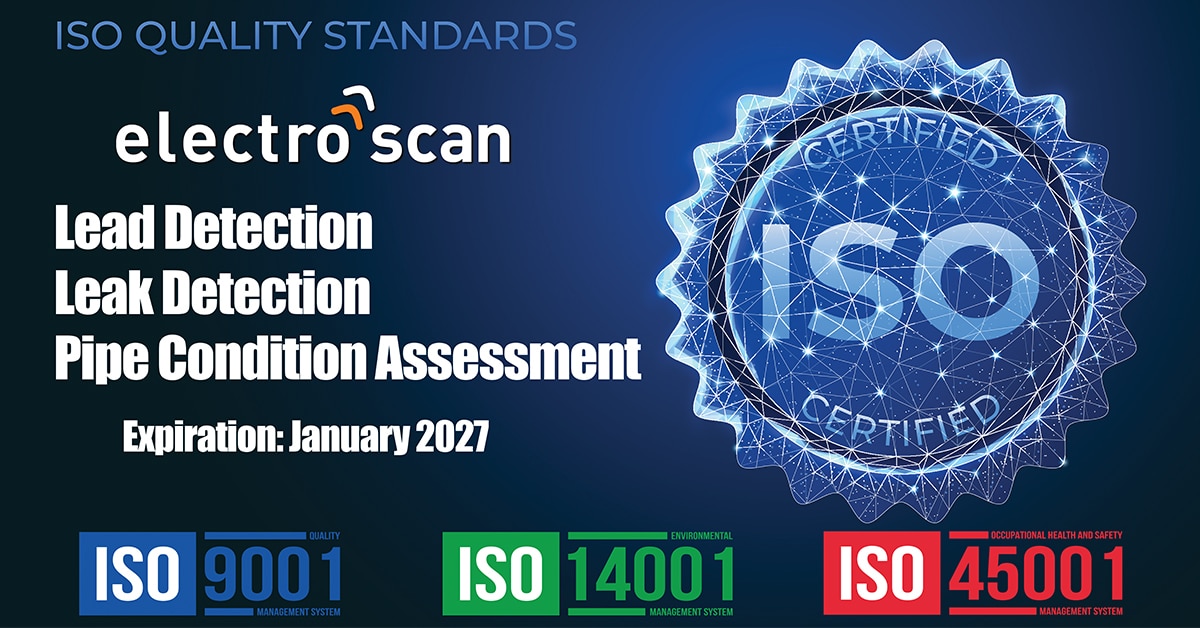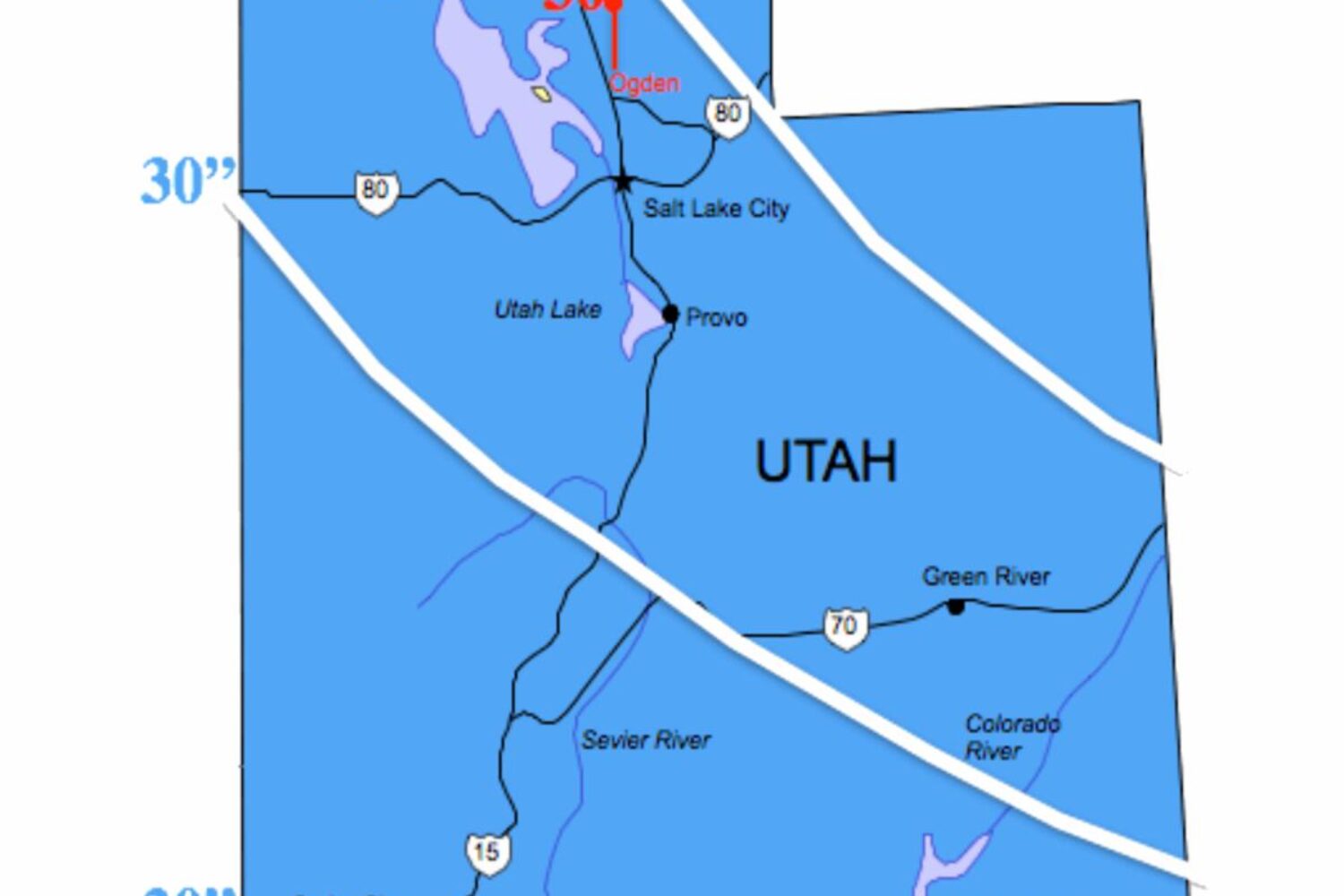HOUSTON, TX, UNITED STATES, March 20, 2025 /EINPresswire.com/ — Electro Scan Inc. today announced the release of a breakthrough artificial intelligence (AI) tool that automatically confirms leaks from inside water of pipes. Disrupting the global leak detection market, the new AI tool tracks water particles exiting from a pipe delivering a 100% confirmation of leak locations, including clock position and severity of leaks measured in gallons per minute or liters per second.
Working in combination with the company’s industry leading focused electrode leak location (FELL) solutions, operators first identify leak locations using FELL. Then pause or halt its high resolution underwater camera to track the movement of individual water particles showing where water exits the pipe through a confirmed leak.
Earlier this week Electro Scan Inc. was named #2 of the 10 Top Plumbing Companies in the USA Using Cutting-Edge Leak Detection [2025 Guide]. The list cited Electro Scan’s competitive advantage using electrical resistance testing or FELL to locate leaks.
According to the American Society of Civil Engineers, the U.S. loses about 6 billion gallons of treated water each day because of leaky pipes and aging infrastructure.
In 2024 the U.S. EPA named electrical resistance testing, used by the company’s SWORDFISH lead detection product, as the only commercially available innovative technology able to locate buried lead pipes, without digging.
Electro Scan’s new AI tracing TOOL (now deployed in all pressurized water main and transmission leak detection projects), makes the use of acoustic-based sensors that listen for leaks, obsolete.
“We are delighted to bring this game-changing product to market,” stated Mike App, Executive Vice President, Electro Scan Inc. “Television cameras were rarely, if ever, used in pressurized water pipes because leaks typically go out of a pipe and a moving camera causes too much disturbance.”
“The trick is knowing where to STOP the camera,” continues App. “By already detecting the leak using Electro Scan’s FELL, field operators know where to STOP the camera while still inside the pipe. Video segments, when stopped, can retrace water particles and confirm leak locations.”
The tool is a Software as a Service (SaaS) product integrated with the company’s Amazon Web Service (AWS) cloud suite.
Traditionally, water utilities have relied on legacy-based acoustic sensors to attempt to locate anomalies that must be further investigated.
But, acoustic sensors, including data loggers and correlators that listen for leaks have many long-standing operational issues, including the inability to:
• Identify multiple leaks on the same pipe.
• Operate in low or no pressure pipes.
• Mistake the sound of customer water usage and hitting the probe against a pipe wall as a leak.
• Identify leaks in newer pipe materials, such as high density polyethylene (HDPE), lined, and other plastic pipes.
• Provide accurate information in noisy or congested cities, plants, or facilities.
As a result, the majority of false-positive readings, i.e. anomalies that falsely indicate a leak, where no leak exits, cause exploratory digs that don’t find any leaks.
Recently, a major U.S water utility conducted a large scale acoustic-based leak detection program, finding no leaks after digging exploratory trenches at each suspected leak location.
In fact, industry experts estimate that nearly 80% of all leak digs are dry holes, i.e. no leak is found.
Electro Scan’s new AI tool in combination with its core FELL-based technologies, eliminates the uncertainty from listening-based solutions.
The new AI tool from Electro Scan Inc. was announced at Texas Water’s annual conference which began earlier this week in Houston, TX.
In contrast, tethered and free-floating acoustic solution must have their data analyzed after leaving the field; with final results not known for days or weeks after inspection.
While many utilities in North America, United Kingdom, and Australasia, have been deploying acoustic sensors in the thousands, poor data fidelity, false:positive reporting, ongoing equipment maintenance issues, and lack of precise locational or severity data, has resulted in costly projects with few measurable benefits.
“Identifying sources of non-revenue water (NRW) has always been a major goal of water utilities. But, the industry hasn’t had the right technology to specifically identify exact locations and prioritize defects on a worst-to-first basis,” states Chuck Hansen, Chairman & Founder, Electro Scan Inc.
“Televising the inside of active water mains and transmission pipelines (while under pressure), by itself, was never a cost-effective or an efficient way to find leaks. But now that technologies like Electro Scan, tell you where to STOP a camera, AI can be applied to confirm 100% leak locations,” stated Hansen.
CCTV was once hoped to help cities locate buried lead pipes, but has since been abandoned. Recently, a large water industry player abandoned their effort to use acoustic sensors to locate lead, allowing Electro Scan to be the sole provider of technology, using electrical resistance testing, to accurately locate lead pipes.
Closed-circuit television (CCTV) cameras have been long used in the sanitary sewer industry; with AI recently added to consistently auto-assign coding defects of pipes often missed by humans coding efforts.
Unfortunately, CCTV cameras or visual inspection in sewers are unable to differentiate cracks in a pipe to defects that go through a pipe and unable to assess joints or service connections for water tightness. Eliminating the use of CCTV to prioritize pipes for repair or use of CCTV to verify pipes for operational readiness, after major repairs or rehabilitation.
As found in other industry applications, AI results based on poor data returns equally poor data, only faster and consistently.
As fewer people rely on CCTV for repair or rehabilitation decision support, CCTV cameras are being limited to seeing maintenance debris, crossbores, protruding taps, roots, and alignment issues, not properly recorded by human recorders.
Electro Scan’s FELL technology for sewers and stormwater pipes, is the only technology to assess the water tightness of gravity pipes, especially at cracks, joints, and service connections, and QA.QC post-rehabilitation pipes to certify operational readiness.
Contact Electro Scan Inc. for sales information.
ABOUT ELECTRO SCAN INC.
Founded in 2011, Electro Scan is an international supplier of machine-intelligent pipeline assessment and quality assurance products & services for the water, sewer, and oil & gas markets. The company develops and markets proprietary equipment and SaaS-based cloud applications that automatically locates, measures, and reports pipeline leaks and water service line pipe materials, including lead pipes. The company’s products and services detect buried lead water services, typically not found by legacy inspection methods.
Janine Mullinix
Electro Scan Inc.
+1 916-779-0660
email us here
Visit us on social media:
Facebook
X
LinkedIn
Instagram
YouTube




